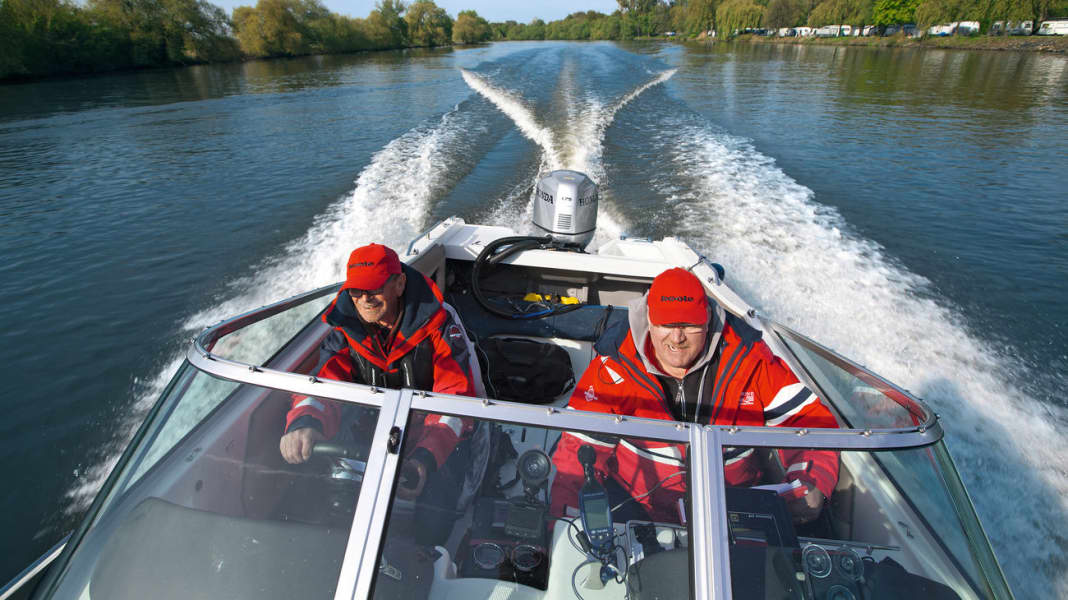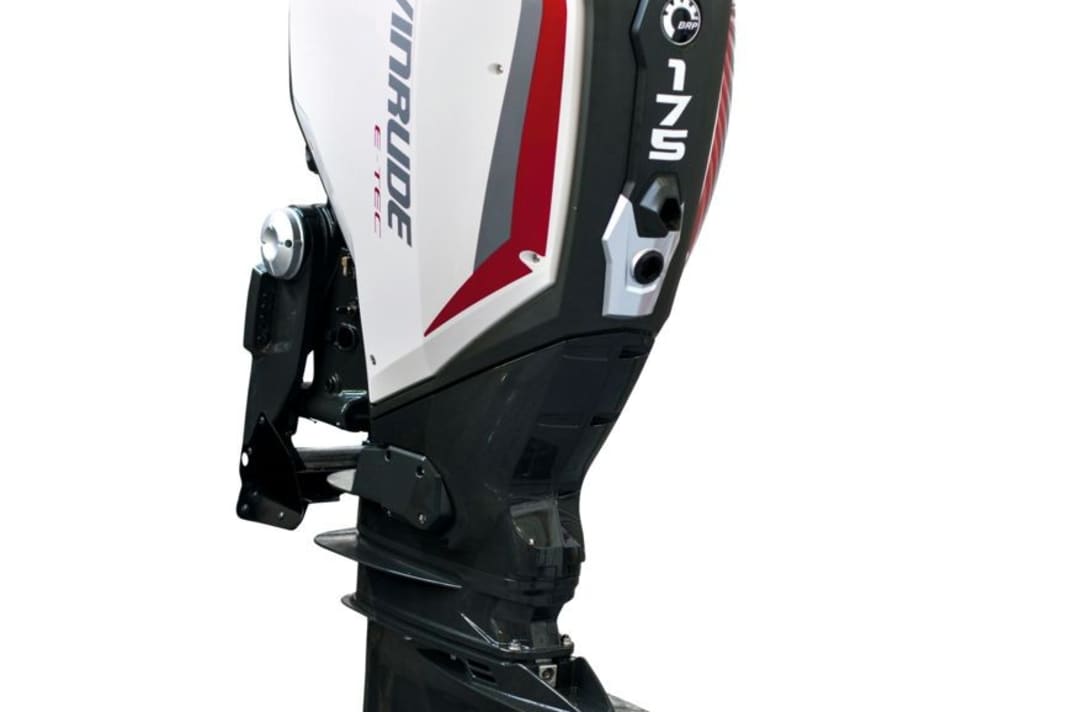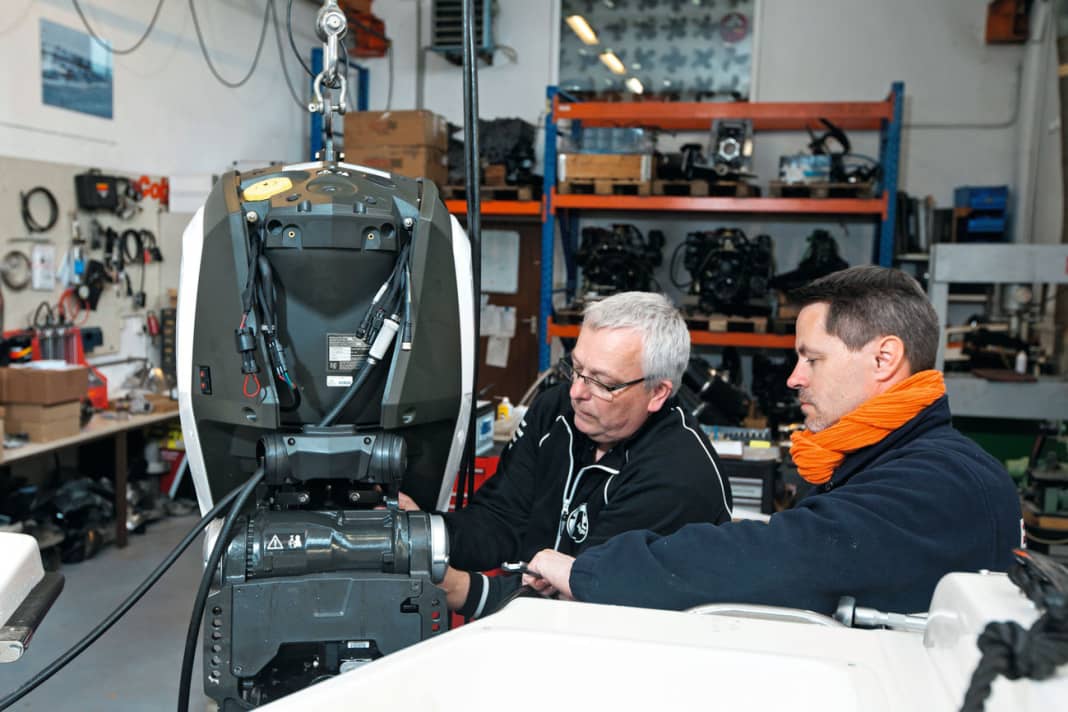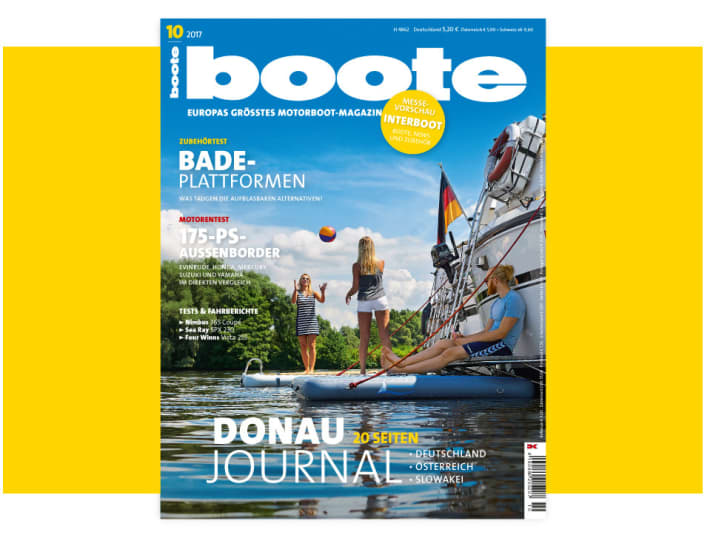
The trend is towards outboard motors. Why? You areTechnically at eye level with those that do their work under the cover, i.e. under the sun lounger. Compared to their built-in counterparts, they also requireLess spacewhich equates to more storage space, and they also weigh less for the same performance - both of which are not negligible advantages when driving.
In principle, however, the 175 hp engines tend to play a subordinate role, as boats to which they can be attached are either only approved up to 150 hp or up to 200 hp and more, and the price difference for the engine in between is not too great.
What's more, the engines from 150 to 200 or 225 hp are almost identical in construction and differ from each other only in the programming of the engine computer or in individual components. Or the 175 hp engine is even a throttled 200 hp engine. All the more reason to175 hp engines from their shadowy existence and to check what this class has on and underneath.






All known manufacturers who have a 175 hp engine in their programme were invited and also agreed to participate. Evinrude , Honda , Mercury , Selva , Suzuki and Yamaha. The Selva model was delivered to the test site, but nobody turned up for assembly and tuning. We don't know the reason for this.
Technically speaking, everything is representedFour and six-cylinder engines as purely naturally aspirated engines or with turbocharging, whose cylinders are arranged in a row or V-shape and have different cubic capacities. Turbocharging means that additional air is blown into the combustion chambers by means of a technical device such as an exhaust gas turbocharger or a mechanically driven compressor.
This allows the engine to get more air into the cylinders than by simply sucking it in.This means that an engine with less displacement can compete with a naturally aspirated engine with more displacement. This is because more air in the cylinder can be mixed with more fuel, which ultimately means more power. Of our test subjects, only the Mercury Verado works with supercharging (compressor).
However, there are also differences in the mode of operation, where we are dealing with four-stroke and two-stroke engines. Evinrude belongs to the latter category.However, anyone who thinks of two-stroke engines as DKW or Trabant cars and their sometimes visible exhaust fumesis right in terms of the operating principle, but not when it comes to emissions. The V6 Evinrude test engine plays in the very top league and has no need to hide from the four-stroke engines. It is theTop representative of what is technically possible in the two-stroke class today.
As a test boat we have a Hellwig Milos V630 Cabin AB engines with an output of 150 hp to 225 hp can be attached. In our opinion, this boat and the 175 hp engines harmonise perfectly, and it doesn't need more power, as we are already pushing the boat's reserves to the limit, especially at top speeds. It was delivered slightly slimmed down, i.e. without a rear bench seat, but otherwise everything corresponds to the standard equipment, such as the hydraulic steering.






In order to create the same conditions for all test candidates, the boat was trimmed back to the same weight after each tuning and test drive, i.e. the tank was filled with the amount of fuel consumed during the drives. In order to obtain comparable results, we drove each engine on the same main route in the same direction, and in the numerous acceleration measurements we took the ones with the best values.
Each engine manufacturer fitted their engine to the boat themselves and we gave them the time they needed to tune it. After the first test drive, the engine was hung a hole higher or lower in order to finally fit one of many propellers for the test.
Mercury, Suzuki and Yamaha tuned their engines with the intention of achieving good and more than satisfactory results in all areas (acceleration, fuel consumption, sound pressure, speed). Honda, on the other hand, focussed on the best fuel efficiency, moderate sound pressure and not too high revs, without losing sight of speed. Evinrude kept it simple and set out with the clear goal of being the fastest.
For track and field athletes, it is the shoe that makes the running experience and decides the result or victory and defeat. For boats, it's the propeller; it was made of stainless steel on all test candidates. It was not only our telemetry data that revealed clear and interesting differences in how the power ultimately reaches the water and how the 175 hp was converted in each case.
Yamaha at least stands out in terms of acceleration values. If you look at the values at 10 km/h and 20 km/h, this also applies to Evinrude, whose propeller - the only one with acceleration openings on the hub - took noticeably longer, which is particularly evident in the comparison of revs to l/km at 1500 to 2500 rpm.
As far as acceleration is concerned, Suzuki showed everyone how it's done with its propeller-engine set-up. The engine accelerated the fastest from 0 to 70 km/h (8.85 s) and required the shortest distance (103 m) to do so. Mercury followed right behind with 10.48 s and 130.02 m. Honda beats Evinrude with 138.32 m and 140.01 m, even though both need the same time (11.37 s). Yamaha needed the longest run-up with 164.62 m and 13.9 s.
In terms of top speed, all candidates exceeded the 80 km/h mark, which is considerable for this size of boat. The leader is Evinrude (85.7 km/h), followed by Yamaha (84.8 km/h). Honda and Mercury then share the podium (83.6 km/h). The lowest maximum speed was recorded by Suzuki at 81.1 km/h.
It is interesting to compare the respective engine speeds. The Yamaha had some problems with acceleration, but not with top speed, or in other words, the choice of propeller was in favour of top speed, so that the engine reached a maximum of 5400 rpm at the permitted 5000 to 6000 rpm.
Honda took the second longest to get up to speed; here the technicians opted for the lower rev range with the permitted 5000 to 6000 rpm and left plenty of room for manoeuvre at 5400 rpm. Evinrude (5000 to 6000 rpm) did not allow itself quite as much room for manoeuvre, with its engine not revving higher than 5700 rpm. Mercury (5800 to 6400 rpm), on the other hand, utilised the rev range almost completely down to a reserve of 100 rpm; Suzuki (5500 to 6100 rpm), on the other hand, allowed its engine to operate at the upper limit up to the maximum speed.
While Honda, Suzuki and Yamaha can only be driven with manual power trim - the driver presses the button on the gear lever themselves - both Evinrude (as standard) and Mercury (for an extra charge) offer an automatic power trim system. Both have programmes that can be set in several stages or profiles for the respective boat and trim it appropriately, but also enable individual fine-tuning.
Evinrude used the general programme for the test, which would have worked well for any normal boater. However, we did without it and trimmed it ourselves. Mercury, on the other hand, optimised its "Active Trim Kit" during a very extensive test drive using a laptop.
We used a medium setting and the highest setting (also known as "aggressive trim") and have to admit without hesitation that the guys from Mercury did a great job on the test boat. But there's nothing like the tester's sensitive thumb: although Mercury was narrowly beaten in the acceleration values (by 0.1 s!), it was able to go a long way in the top speed and show the electronics how and where to go.
If we look at the range in which the test boat is most economical when travelling at high gliding speeds, we find, after analysing our measurement data, that it lies between 3000 and 3500 rpm for all engines. With the Mercury, this applies to both speeds; at 28.5 to 37.4 km/h it consumes 0.44 l/km in each case.
Both engine speeds are also suitable for the Evinrude; it consumes 0.47 l/km at 34.7 km/h
and 42.8 km/h respectively. The Suzuki has 3000 rpm and a speed of 32.6 km/h, with consumption of just 0.42 l/km. At the same engine speed, the Honda reaches 41.6 km/h, while only 0.42 litres/km flow through the fuel line, and the Yamaha reaches 38.6 km/h and a fuel consumption of 0.43 litres/km.
Based on a tank capacity of 100 litres, the Suzuki (204 km) theoretically goes the furthest, followed by Honda with 202 km, Yamaha with 196 km, Mercury with 192 km and Evinrude with 182 km - plus 15% reserve in each case.
If you look at the test candidates at the same speeds, you realise that the engines are also close to each other here and that sometimes one performs better, sometimes the other - apart from Evinrude, which shows higher values at speeds of 20 to 30 km/h or at 2000 to 2500 rpm due to its propeller, because it is a specially ventilated propeller.
As far as sound pressure is concerned, all test subjects remain below the 85 dB(A) limit up to 3500 rpm and are above it from 4000 to 4500 rpm. Only the Evinrude engine begins to exceed this value at 2500 rpm.
Under the bonnet, all manufacturers use electronically controlled fuel injection. This includes Evinrude, which, unlike its competitors, does not inject the fuel before the intake valves but directly into the combustion chamber instead of using intake manifold injection.
As Evinrude works according to the two-stroke principle, it "mists" oil onto everything that moves in the engine block, even in the smallest doses. Important with Mercury: The engine must never be operated without an air filter, otherwise the compressor can be severely damaged if anything enters unfiltered.
While Honda and Yamaha control their models using conventional Bowden cables, the rest are commanded electrically or electronically - or in modern parlance, by "fly-by-wire". In terms of technical refinements, Evinrude takes top spot, followed closely by Suzuki and Mercury. Honda and Yamaha share third place on the podium.
Honda, Mercury and Yamaha offer an effective idle lock during the test. Suzuki manages without a lockout and states that at high engine speeds, the electronics first reduce the engine speed to 3000 rpm and then to 2000 rpm before shifting from full forward to reverse gear. Evinrude has a similar system, except that according to the manufacturer, the engine speed is reduced to 1200 rpm before the gear change continues.
There are also differences in the underwater range. With the exception of Suzuki and Evinrude, where the gears are shifted electrically, all engines have conventionally shifted gearboxes. And with Suzuki, only one plug is turned to make the propeller run clockwise or anti-clockwise, which makes dual installation easier; you just have to buy a suitable propeller.
All engines are steered using the hydraulic steering system fitted as standard in the boat. The only exception is Evinrude, which does not require a steering cylinder but instead connects the hydraulic hoses directly to the engine, as it has integrated power steering as standard.
It is state of the art for all manufacturers to use alarm systems that emit an acoustic or visual signal in the event of a malfunction and keep the engine running with an emergency programme in an emergency.
As far as the warranty is concerned, all manufacturers grant a three-year warranty, with some also offering special arrangements. At Suzuki, free mobility protection is included in the three-year warranty period. At Honda, the warranty can be extended by a further two years for a fee, while Mercury offers two years and allows a three-year extension at no extra charge if the customer provides proof of the prescribed service and has it registered.
Conclusion:
If you combine the weight values, the rankings in the individual categories plus the level of technology, the price and the warranty regulations, you see Suzuki in first place, closely followed by Mercury in second place. Third place in the overall score is shared by Honda and Yamaha, with Evinrude in fourth place - although the latter is ahead in both top speed and state of the art.
This article is from BOOTE 10/2017


